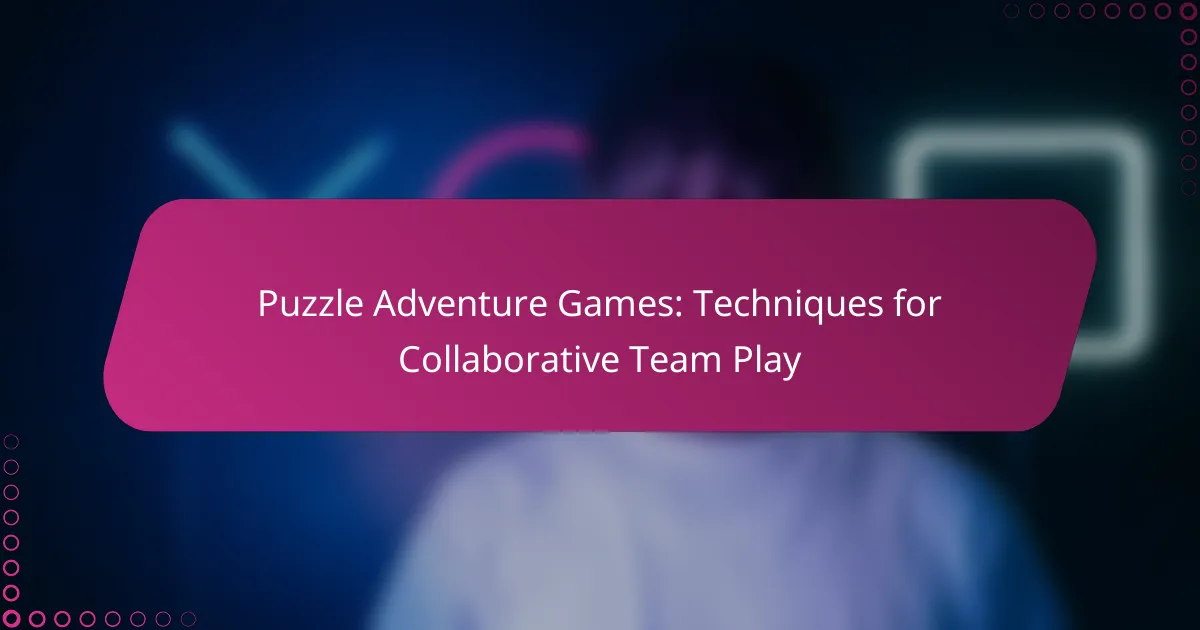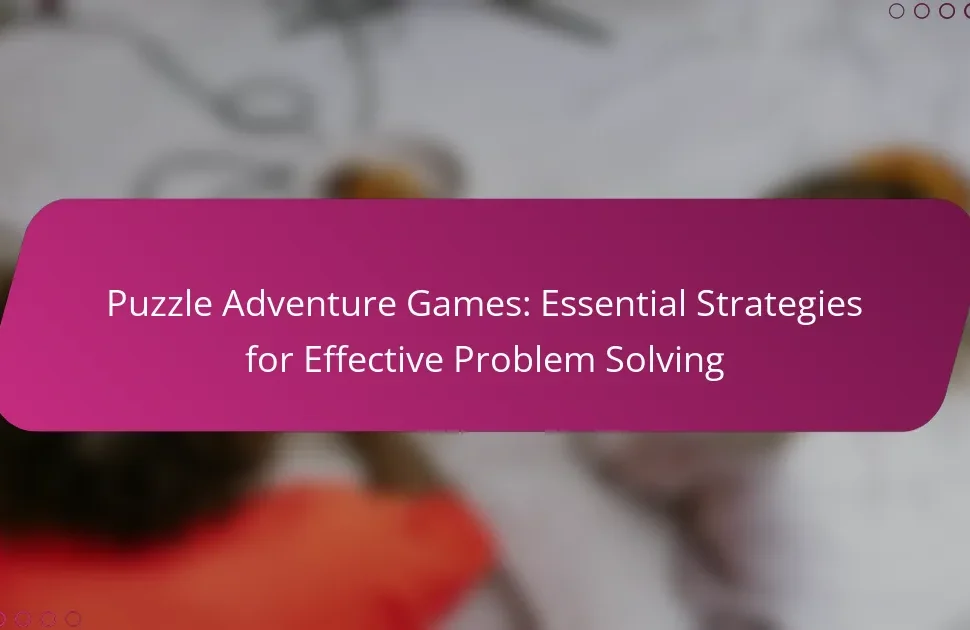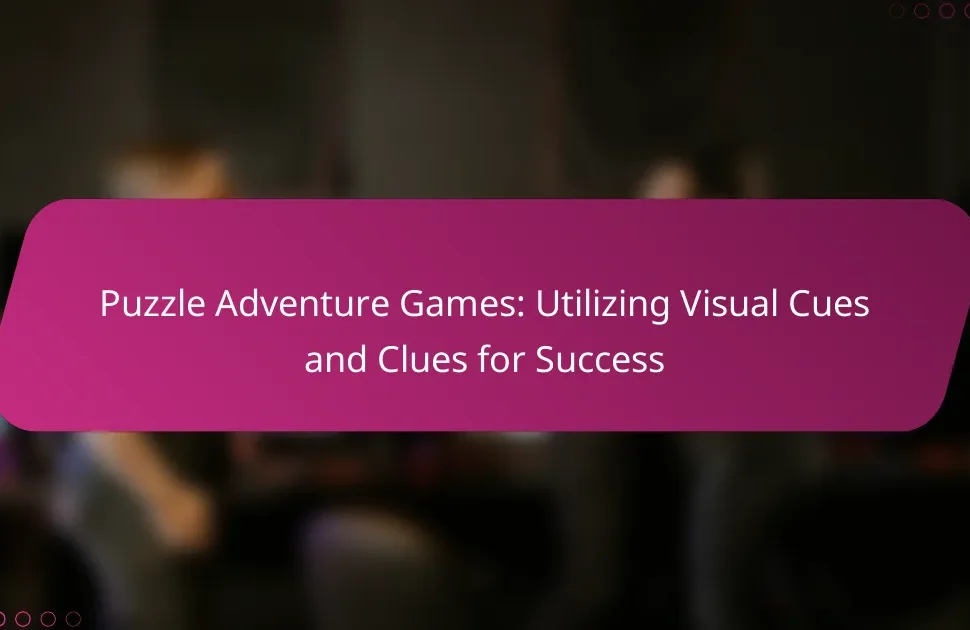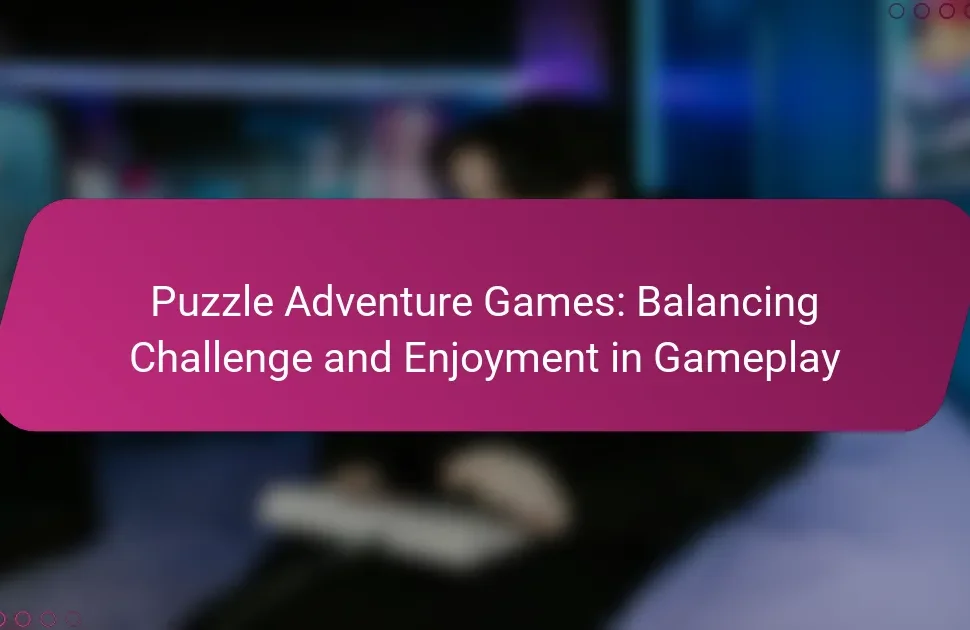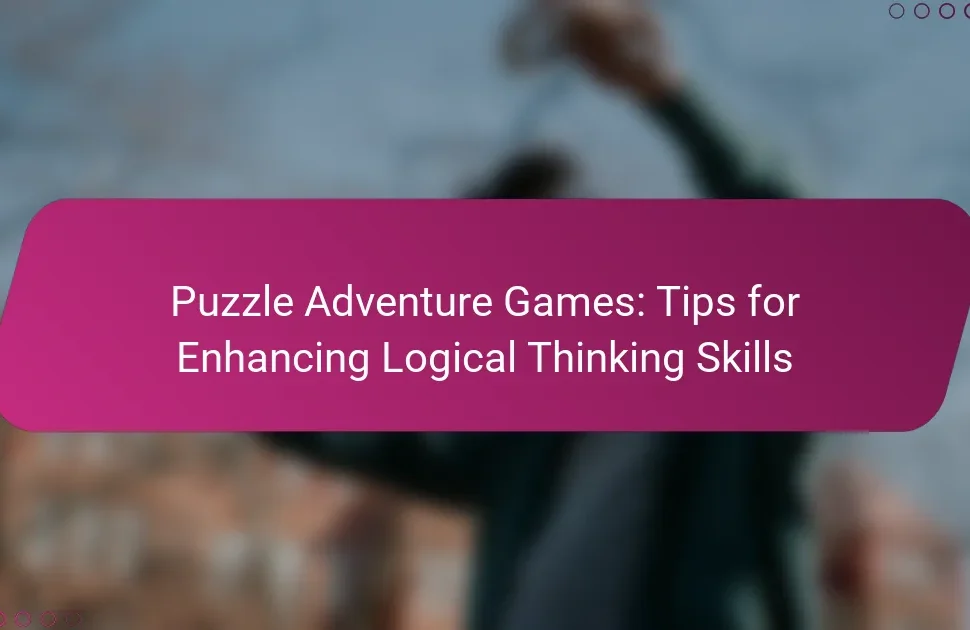Collaborative gameplay in puzzle adventure games enhances engagement and creativity. This article explores effective communication techniques, problem-solving strategies, and unique game features that promote teamwork. It also addresses common challenges teams face and offers solutions to improve coordination and efficiency. By leveraging each player’s strengths, teams can create a more rewarding gaming experience.
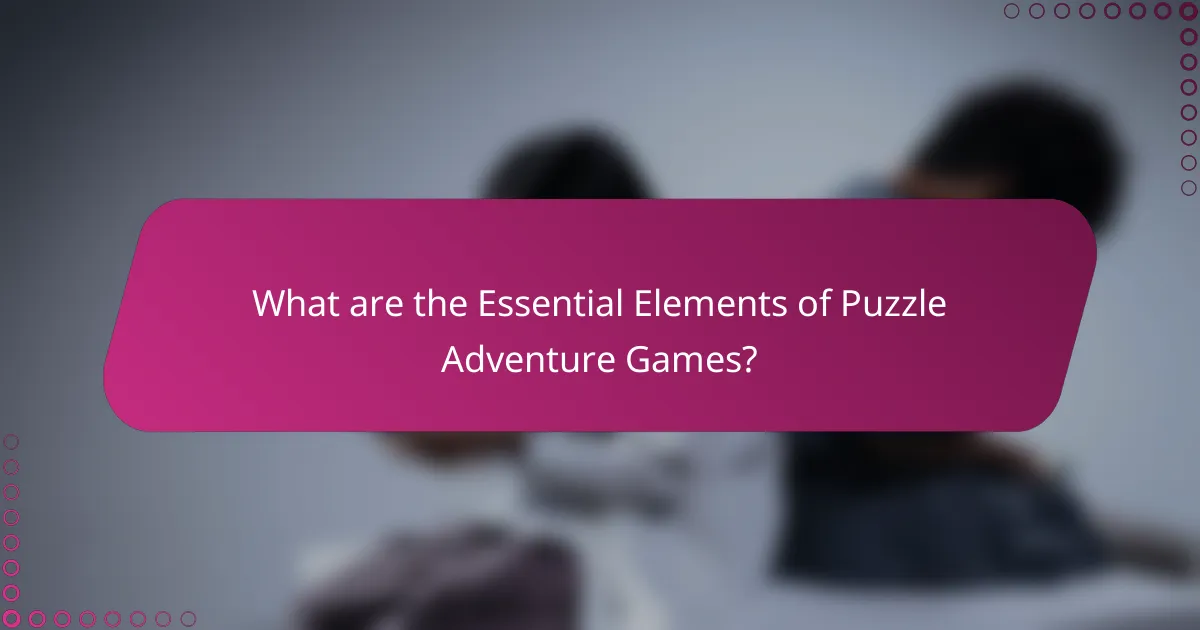
What are the Essential Elements of Puzzle Adventure Games?
Puzzle adventure games emphasize teamwork through communication, problem-solving, and shared objectives. Essential elements include cooperative puzzles, interactive environments, and role differentiation. Collaborative gameplay enhances engagement and fosters creativity. Players must leverage each other’s strengths to overcome challenges, ensuring a richer gaming experience.
How do Game Mechanics Influence Team Collaboration?
Game mechanics significantly enhance team collaboration in puzzle adventure games by fostering communication and strategic thinking. Collaborative challenges require players to share information and work together, promoting a sense of unity.
For example, time-limited puzzles encourage teams to delegate tasks effectively, ensuring that each member contributes according to their strengths. The use of shared objectives creates a common purpose, which enhances engagement and motivation.
Additionally, game mechanics like leaderboards and rewards can incentivize teamwork, as players strive for collective achievements. This dynamic not only builds trust among team members but also improves problem-solving skills through diverse perspectives.
In summary, puzzle adventure games utilize mechanics that cultivate collaboration, leading to improved team dynamics and performance.
Which Storytelling Techniques Enhance Engagement?
Puzzle adventure games enhance engagement through immersive storytelling, collaborative problem-solving, and dynamic character interactions. These techniques foster teamwork and create memorable experiences.
Incorporating narrative-driven quests encourages players to invest emotionally in the story. Collaborative puzzles require diverse skills, promoting communication and cooperation among team members. Dynamic interactions with characters deepen engagement, making players feel integral to the unfolding narrative.
Games that utilize these techniques often report higher player retention and satisfaction, as they create a shared journey that resonates with participants. Engaging storytelling techniques are essential for maximizing the impact of puzzle adventure games.
What Role Does Environment Design Play in Gameplay?
Environment design significantly enhances gameplay by shaping player interactions and experiences. Thoughtfully crafted environments foster collaboration, encouraging team communication and problem-solving. For instance, spatial layouts can create opportunities for strategic planning, while visual cues guide players toward objectives. Effective environment design also integrates challenges that require teamwork, reinforcing the social aspect of puzzle adventure games. Unique attributes, such as interactive elements or dynamic obstacles, can further elevate the collaborative experience, making teamwork essential for progression.
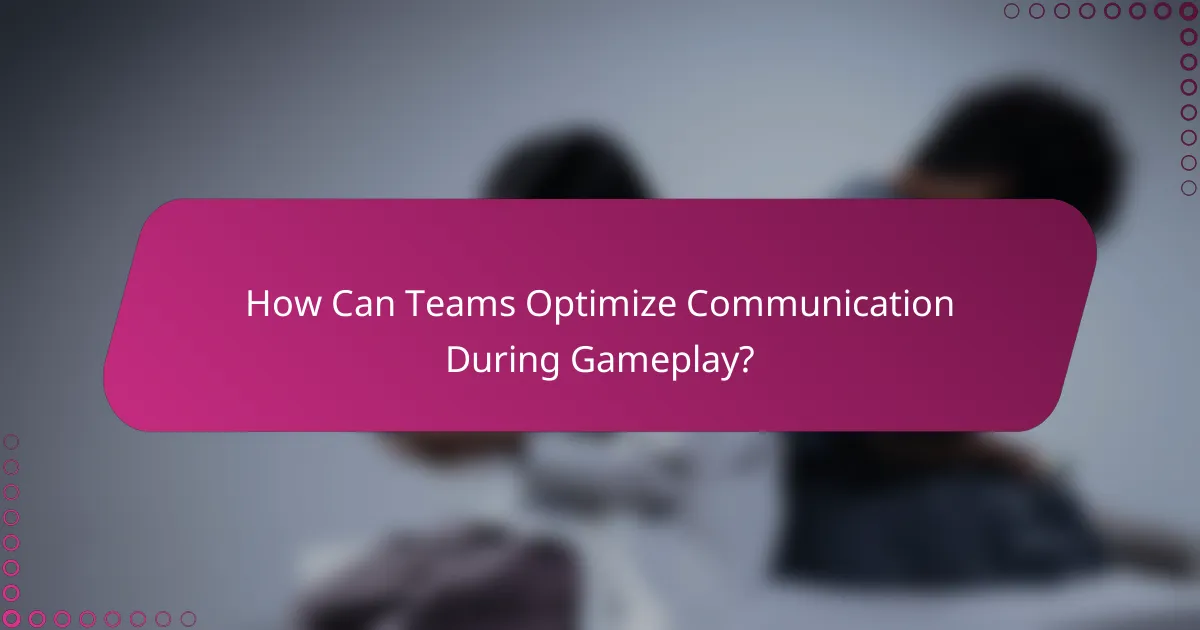
How Can Teams Optimize Communication During Gameplay?
Effective communication during gameplay can be optimized through clear roles, active listening, and strategic use of in-game tools. Establishing defined roles helps team members understand their responsibilities, enhancing coordination. Active listening fosters a supportive environment where ideas and strategies can be shared openly. Utilizing in-game communication tools, such as voice chat or messaging systems, ensures that information is conveyed quickly and accurately. Additionally, regular briefings can help teams stay aligned on objectives and tactics throughout the game.
What Communication Tools Are Most Effective for Collaboration?
Puzzle adventure games benefit from effective communication tools that enhance collaborative team play. Tools like voice chat, instant messaging, and collaborative platforms facilitate real-time interaction. Voice chat allows for quick decision-making, while instant messaging enables sharing of hints and strategies. Collaborative platforms provide shared spaces for planning and tracking progress. Utilizing these tools fosters teamwork and improves overall game performance.
How Can Non-Verbal Cues Improve Team Dynamics?
Non-verbal cues enhance team dynamics in puzzle adventure games by fostering communication and collaboration. These cues, such as body language and facial expressions, help players understand each other’s intentions and emotions, leading to more effective teamwork. For example, a nod or smile can signal agreement or encouragement, promoting a positive atmosphere. Additionally, observing teammates’ non-verbal signals can improve strategy alignment, as players anticipate actions based on visual cues. This synergy ultimately results in a more cohesive and efficient team performance.
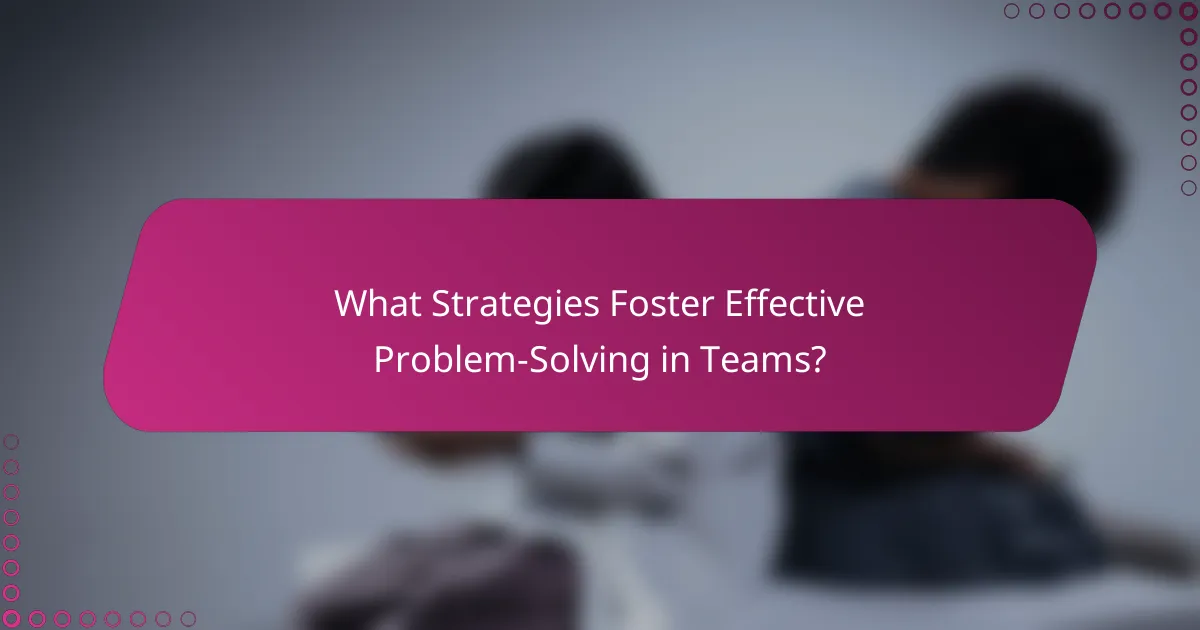
What Strategies Foster Effective Problem-Solving in Teams?
Effective problem-solving in teams is fostered through strategies that encourage collaboration and communication. Puzzle adventure games enhance teamwork by promoting critical thinking, creativity, and trust among players.
Engaging in these games requires players to share insights and strategies, which strengthens their ability to work together. Additionally, setting clear goals and roles within the game allows team members to understand their contributions, enhancing efficiency.
The immersive nature of puzzle adventure games also encourages active participation, as players must rely on each other’s strengths to progress. This dynamic builds a sense of camaraderie, making problem-solving a collective effort.
Finally, debriefing sessions after gameplay provide opportunities for reflection, allowing teams to discuss what worked and what didn’t, further refining their collaborative problem-solving skills.
Which Types of Puzzles Require Collaborative Approaches?
Puzzle adventure games often require collaborative approaches, particularly in scenarios involving complex challenges. These games benefit from teamwork, where players combine their skills to solve puzzles efficiently.
Types of puzzles that necessitate collaboration include:
1. **Multi-part puzzles**: Require input from multiple players to unlock solutions.
2. **Communication-based puzzles**: Depend on players sharing information or clues to progress.
3. **Resource management puzzles**: Involve strategizing together to allocate limited resources effectively.
4. **Timed challenges**: Demand synchronized efforts to complete tasks within a set timeframe.
These collaborative techniques enhance problem-solving and foster teamwork among players.
How Can Teams Balance Individual Contributions and Group Efforts?
Teams can balance individual contributions and group efforts by fostering communication, defining roles, and encouraging collaboration. Effective puzzle adventure games require players to share insights and strategize together. Establishing clear objectives helps align individual strengths with team goals. Incorporating feedback loops allows for continuous improvement and adaptation during gameplay. Celebrating both individual achievements and collective successes promotes a balanced team dynamic.
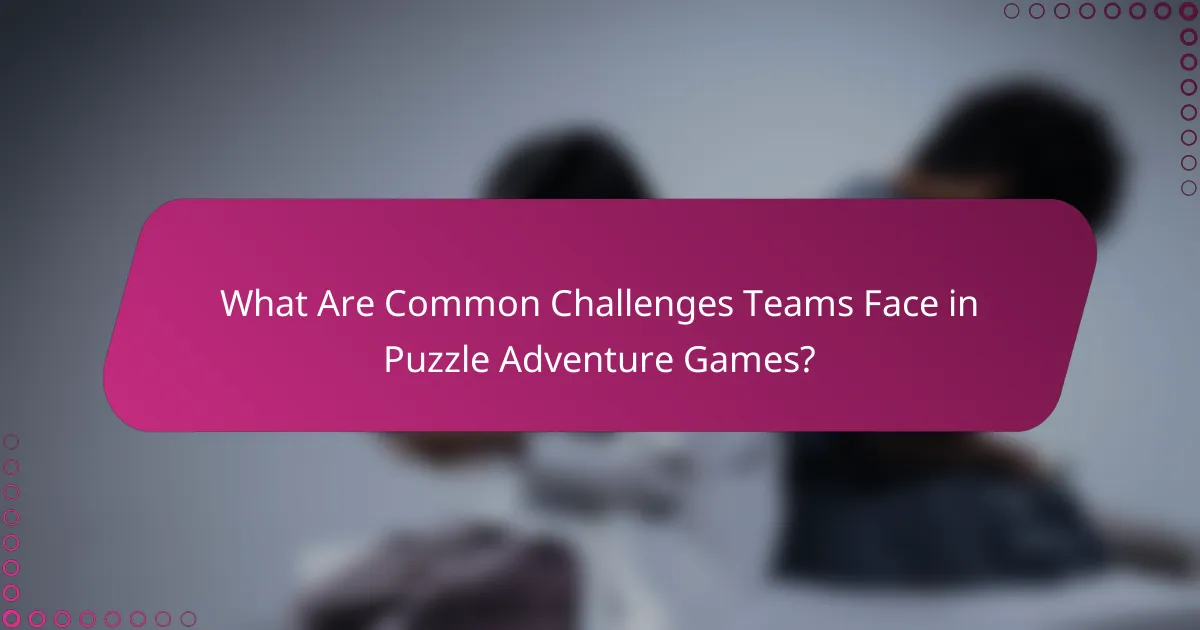
What Are Common Challenges Teams Face in Puzzle Adventure Games?
Puzzle adventure games often present teams with challenges that can hinder collaboration and progress. Common issues include communication breakdowns, differing problem-solving approaches, time management difficulties, and varying levels of engagement among team members.
Effective communication is crucial; misunderstandings can lead to frustration and stalled gameplay. Teams may also struggle with diverse strategies, where some players prioritize exploration while others focus on puzzles. Time management becomes critical as teams must balance exploration and puzzle-solving within game constraints. Lastly, uneven participation can create tension, as some players may dominate discussions or decision-making, leaving others disengaged.
Addressing these challenges through structured teamwork and clear roles can significantly enhance the overall gaming experience.
How Can Teams Overcome Frustration and Conflict?
Teams can overcome frustration and conflict in puzzle adventure games by fostering communication and collaboration. Effective strategies include setting clear goals, encouraging open dialogue, and assigning roles based on individual strengths.
Establishing a shared understanding of objectives helps align team efforts. Regular check-ins allow members to express concerns and share progress. Utilizing each member’s unique skills enhances problem-solving and promotes a sense of ownership.
Additionally, celebrating small wins boosts morale and reinforces teamwork. By creating a supportive environment, teams can navigate challenges and enhance their collaborative experience in puzzle adventure games.
What Strategies Help Manage Time Pressure During Gameplay?
Effective strategies to manage time pressure during gameplay in puzzle adventure games include prioritizing tasks, maintaining clear communication, and practicing quick decision-making. Players should assign roles based on strengths to streamline collaboration. Utilizing timers can create urgency, enhancing focus on objectives. Regular feedback during gameplay helps adjust strategies in real-time, ensuring the team stays aligned and efficient.
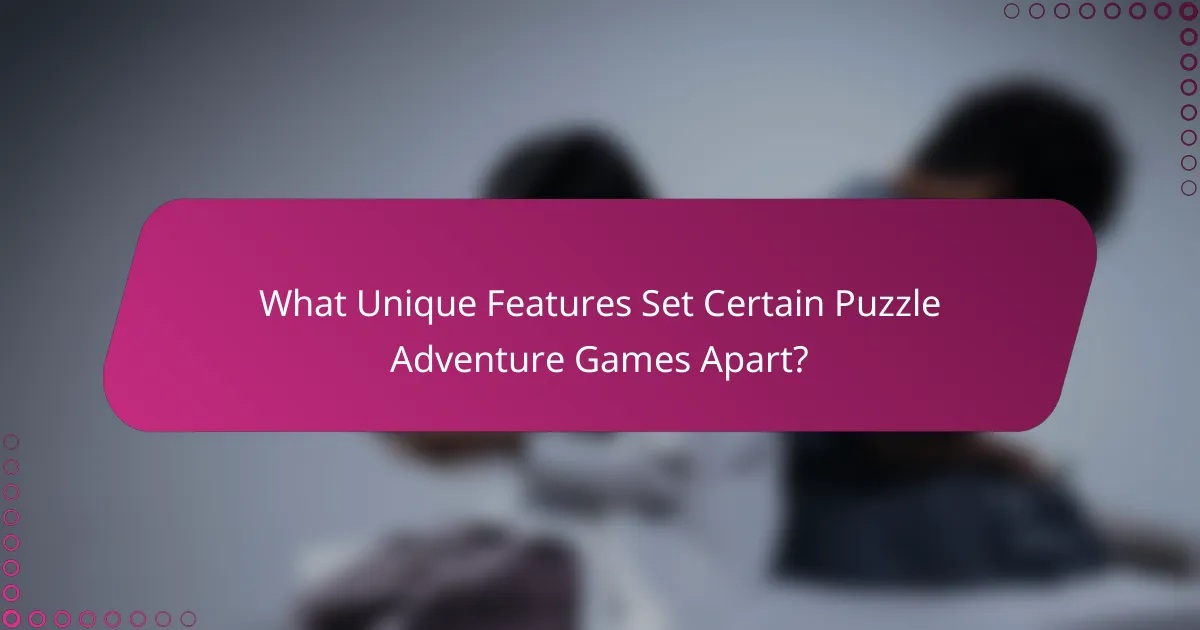
What Unique Features Set Certain Puzzle Adventure Games Apart?
Unique features that set certain puzzle adventure games apart include innovative mechanics, engaging narratives, and collaborative gameplay elements. These games often incorporate unique problem-solving techniques that require teamwork, enhancing the overall experience. For example, some titles feature puzzles that can only be solved through coordinated efforts, fostering communication among players. Additionally, diverse environments and interactive storytelling create immersive worlds that challenge players’ critical thinking and creativity. These attributes contribute to the distinctiveness of puzzle adventure games, making them appealing to a broad audience.
Which Games Offer Innovative Collaborative Mechanics?
Puzzle adventure games often feature innovative collaborative mechanics that enhance teamwork. Notable examples include “Portal 2,” which requires players to use portals creatively together, and “Overcooked,” where coordination is essential for completing cooking tasks. “Keep Talking and Nobody Explodes” emphasizes communication, as one player defuses a bomb while others read a manual. “Unravel Two” allows players to control interconnected characters, promoting synergy in solving puzzles. These games exemplify unique collaborative attributes that foster engagement and strategic cooperation.
How Do Cultural Themes Influence Puzzle Design?
Cultural themes significantly shape puzzle design by influencing narrative, aesthetics, and gameplay mechanics. Designers incorporate local folklore, traditions, and societal values to create immersive experiences. This enhances player engagement and fosters collaborative team play, as players connect through shared cultural references. For instance, puzzles inspired by specific cultural motifs can encourage teamwork by requiring players to leverage diverse perspectives. Cultural elements also dictate the complexity and style of puzzles, ensuring they resonate with the target audience. By embedding these themes, puzzle adventure games promote deeper interaction and understanding among players.

What Rare Attributes Can Enhance the Team Play Experience?
Rare attributes that can enhance the team play experience in puzzle adventure games include unique character abilities, dynamic environmental interactions, and customizable teamwork strategies. These elements foster collaboration and elevate problem-solving dynamics. Unique character abilities allow players to contribute distinct skills, enhancing synergy. Dynamic environmental interactions create opportunities for creative teamwork solutions. Customizable strategies empower teams to adapt their approach, improving engagement and enjoyment.
How Can Customizable Characters Impact Team Dynamics?
Customizable characters enhance team dynamics by fostering collaboration and individual expression. Players can tailor their avatars to reflect personal preferences, which promotes engagement. This personalization leads to stronger connections among team members, as they feel represented and invested in the game. Additionally, unique character abilities can complement team strategies, encouraging players to communicate and coordinate effectively. As a result, customizable characters not only enrich the gaming experience but also improve teamwork and problem-solving skills.
What Role Do Seasonal Events and Updates Play in Engagement?
Seasonal events and updates significantly enhance engagement in puzzle adventure games. They introduce fresh challenges and limited-time rewards, motivating players to participate actively. These events create a sense of urgency and community, as players collaborate to achieve goals and share strategies. Regular updates keep gameplay dynamic, ensuring players remain invested over time.
What Best Practices Can Teams Follow for Successful Gameplay?
Effective teamwork in puzzle adventure games hinges on clear communication, strategic planning, and role assignment. Teams should establish a common goal and utilize each member’s strengths for optimal problem-solving.
1. Communicate openly to share ideas and strategies.
2. Assign specific roles based on individual skills.
3. Collaborate on puzzles to leverage diverse perspectives.
4. Review progress regularly to adjust strategies as needed.
These practices enhance collaboration and lead to successful gameplay outcomes.
